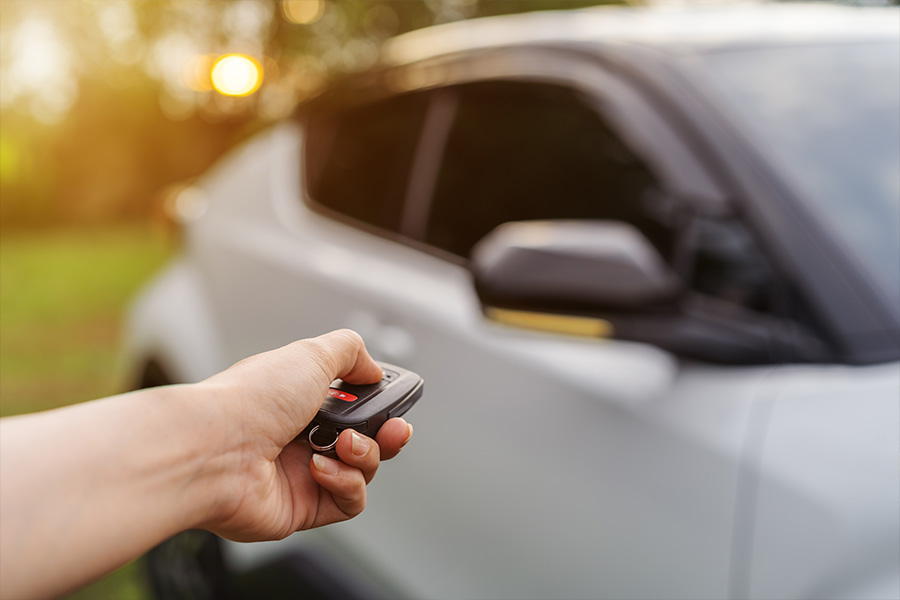
The History of Car Locks
Today we take it for granted that modern cars are sold with keys that allow owners to unlock the doors and trunk and start their vehicles. However, it wasn’t always that way.
At one time, cars did not include keys and were easy to steal. Auto manufacturers eventually developed various locking systems that were convenient to use and improved security. Over the years, technology has continually improved, and today car owners can often lock or unlock vehicles from a distance and start them by pushing a button.
Early Autos Had No Security
While it might be frustrating to keep track of your car keys or lock yourself out of your car, consider the plight of the first auto owners. Generally, only the wealthy could afford cars. But, despite the amount of money they spent on their vehicles, the only way they could prevent them from being stolen was to remove the steering wheels.
The first auto key was introduced in 1910, but it could only lock the ignition. Instead, owners used a crank to start the engines. It wasn’t until the 1940s that manufacturers began offering keys that could start cars, help prevent auto theft, and protect valuables in cars.
Automakers Eventually Introduced Vehicle Locks
In the 1940s, Chrysler manufactured vehicles equipped with ignition tumblers that could start cars. Auto doors included cylinder locks like those used for home doors. Locking systems were entirely mechanical, with no electronic parts.
Until the 1970s, keys for some models could be used to start cars and lock them. Unfortunately, this also made it easy for a thief to get into a vehicle, remove the cylinder, and steal the car. With that in mind, manufacturers began issuing separate keys for car locks and ignitions.
The Era of Traditional Locks
For decades, mechanical locks were the standard for vehicles. They were all designed to use a particular kind of key that could be cut to fit various cars. Manufacturers primarily used two types of locks, and both are still in use today:
Pin Tumbler
Each lock has two pins within a cylinder. A key with the correct height of cuts must be used to raise the pins, causing the lock to open.
Wafer Tumbler
While the design of this lock is like the pin tumbler, each lock includes flat, one-piece wafers in various sizes. A key pushes all wafers into the correct place, which allows the lock to be turned and opened.
These two lock styles are easy for manufacturers to produce. It is also simple for locksmiths to replicate keys for owners, which is especially helpful during lockouts.
However, there is also a downside to the designs. Anyone with the right tools and basic skills can pick the locks. Furthermore, anyone can buy the needed gear and find instructions on how to pick locks on the Internet.
For many years, thieves used a method called “bumping” to pick tumbler and wafer locks. They used blank keys designed for each car model. Once the keys were inserted, thieves could use a hammer or screwdriver to bump the keys, forcing pins to create space.
Mechanical keys are still in use since there are so many older vehicles on the road. However, manufacturers are installing more advanced systems on new cars.
Technology Has Improved Vehicle Security
Beginning in 1998, most carmakers started offering central locking systems. This technology eliminated the need for owners to walk around vehicles to lock each door.
Around the same time, carmakers introduced transponder keys. Transponders have built-in chips that “talk” to a vehicle’s computer and start the engine. Each car includes a specific cut key and a single programmed chip to increase security and make theft more difficult.
Transponder Keys
Eventually, transponder keys became complete remote systems. Owners can now use them to remotely lock and unlock doors, open the trunk, and set off an alarm to alert bystanders in emergencies. Moreover, owners can perform these functions while still some distance from their vehicles.
Keyless Fobs
In the late 1990s and early 2000s, auto manufacturers introduced keyless ignition systems primarily on luxury models. Designed for convenience, Mercedes-Benz offered the first models with keyless ignitions.
A keyless ignition may also be called keyless start, intelligent key, push-button start, or smart key. Regardless of the name, the system allows you to start your vehicle without dealing with keys.
Vehicles that include keyless ignition systems come with fobs, small devices that can easily be tucked away in pockets and purses. A fob transmits low-frequency signals to an auto computer. The computer validates the signal, and if it is correct, allows the user to push a button on the console and start the engine.
It is just as simple to shut off the motor. You just press the start/stop button. In addition to keyless ignition, systems typically include a keyless entry feature that lets you enter your car without inserting a key.
While keyless ignition is still considered more of a luxury feature than a necessity, auto specialists Edmunds reports that by 2018 the feature was standard on 62% of new cars.
Biometrics
To further increase vehicle security, the automotive industry is also developing biometric features. Biometric systems can be programmed to recognize fingerprints, the iris, facial features, or voices, making theft very difficult. If systems do not recognize programmed features, access to cars is denied.
Biometrics are used in secure vehicle access control systems that include driver identification and an automatic engine starter. In addition, some carmakers offer a biometric steering wheel and seats. Ford, BMW, and Volkswagen are some of the companies developing the technology.
Cadillac, Buick, and Chinese company Horizons offer models that include facial recognition software. Some models use voice recognition programs. Users do not need passwords, requests process quickly, and it is easy to track unauthorized access.
Locksmiths Provide a Crucial Backup System
Despite the speed at which technology is changing vehicle key systems, one thing remains the same. Locksmiths can still help most owners who have lost keys, been locked out, or need to replace devices.
Locksmiths stay current with technology and can provide everything from traditional duplicate keys to replacement smart keys. They can also program many smart keys.
Car keys have evolved tremendously over the years, and the latest systems offer exceptional convenience and security. For example, vehicles today might use traditional keys, transponders, smart keys, or even biometric access systems.
Joe, a former CIO and tech industry professional, has made it his mission to secure Dallas-Fort Worth (DFW) through the Action Lock Doc, Dallas Safe and Vault, and Summa Security brands. When he’s not running the show at the office, you’ll find him writing about commercial and residential locksmithing, access control, and safes.

